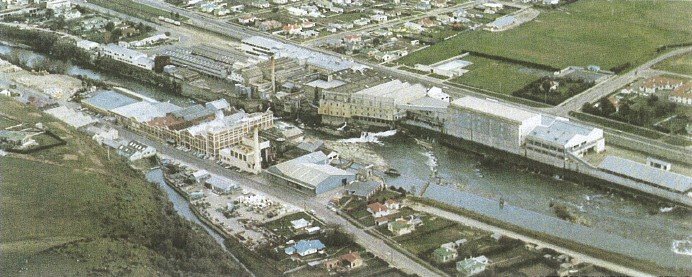A chemical substance known as ouvea premix stored at an old paper mill in Mataura could release toxic ammonia gas if it comes in contact with water.
Southland continues to be inundated with rain, causing the Mataura river to swell – threatening the stores of the product made from aluminium dross, a smelting byproduct.
Gore District Council says it considered the risks associated with the premix when setting the evacuation zones around the paper mill. Work has also been done to protect the mill from floodwaters, but some volunteers claim to have come in contact with the toxic gas while sandbagging.
The Science Media Centre has gathered expert comment on the situation, feel free to use these in your reporting.
Associate Professor Sally Gaw and Professor Brett Robinson, School of Physical and Chemical Sciences, University of Canterbury, comment
“The reaction of ouvea with water will slowly produce ammonia gas and aluminium hydroxide. In a worst case scenario, the heat released by the reaction with water could generate a fire at the plant as well as releasing ammonia gas. The actual impacts will depend on how much of the ouvea comes into contact with water.
“Ammonia gas is a serious risk to human health. If the storage site is flooded, the surrounding area will need to be evacuated and all potentially exposed people will need to be checked by a doctor as exposure to ammonia gas can damage the skin, lungs and eyes and, in severe cases, causes death.
“Impacts on the Mataura River are plausible. Ammonia gas dissolves in water to produce ammonium which is toxic to people, aquatic organisms and stock and depending on the amount of ouvea coming in contact with the floodwaters, toxic effects could occur downstream as far as the estuary.
“Over time the ammonium converts to nitrate which can trigger the growth of algal blooms and is also toxic to aquatic organisms.
“The aluminium hydroxide would be in the form of fine particles which would increase the particle loading in the river and may clog fish gills and smother organisms living on the riverbed.”
No conflict of interest.
Professor Allan Blackman, School of Science, Auckland University of Technology, comments
“Ouvea premix is a mixture comprising around 30% aluminium oxide, 30% aluminium nitride and 30% magnesium aluminate, together with, amongst other things, small amounts of metallic aluminium.
“Of these, the most potentially hazardous compound is aluminium nitride, which reacts with water to form ammonia, release of which into waterways could have significant effects on fish life and aquatic flora.
“This reaction also releases heat, which can aid formation of hydrogen gas from reaction of metallic aluminium in the basic solution formed by the ammonia, thereby causing a potential explosion hazard if large enough quantities of hydrogen are generated.
“However, it appears that the reaction of aluminium nitride with water is relatively slow, meaning that the rate of any release of ammonia into waterways should be similarly slow, as should any evolution of hydrogen.”
No conflict of interest declared.
